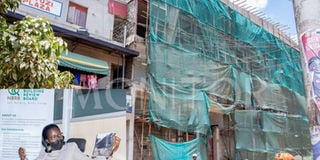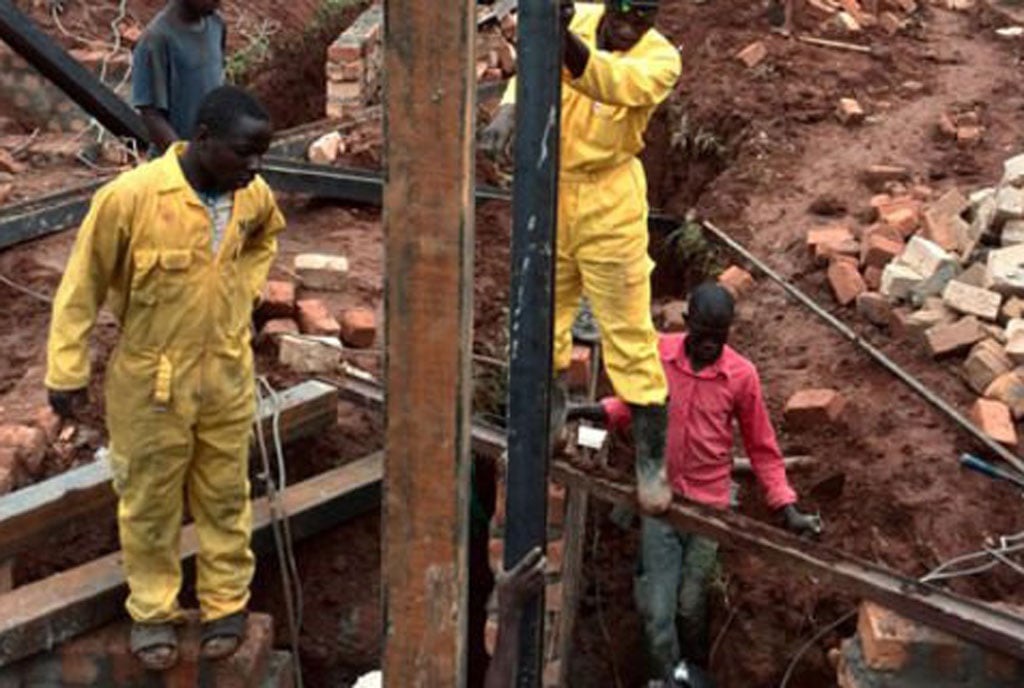Prime
Over 20 buildings face demolition

A building being constructed using steel and bricks in Mengo. Inset is the National Building Review Board Executive Secretary, Ms Flavia Bwire, addressing the media at their offices in Kampala on September 26, 2022. PHOTOS | ISAAC KASAMANI
What you need to know:
- Government on Friday banned the use of steel-timber concrete composite building methods, citing structural safety risks, a move that has since been welcomed by engineers in the country.
More than 20 commercial buildings, mostly in Kampala Metropolitan Area, face demolition for having used the condemned steel-timber concrete composite building method.
The Executive Secretary of the National Building Review Board (NBRB), Ms Flavia Bwire, on Monday said the move aims at saving lives.
“For the existing buildings that were constructed using this method, NBRB is working with local authorities to identify their location and detailed structural integrity assessment will be conducted by registered engineers,” Ms Bwire said.
“Thereafter, the structures that can be retrofitted to bring them into compliance with the Building Control Regulatory framework, shall be strengthened while those that cannot be strengthened will be demolished in accordance with the laws,” she added.
Lawyers say
However, the lawyers warned that the NBRB cannot use the new law to demolish the buildings that were constructed before the law was gazetted as the law does not work retrogressively.
The president of Uganda Law Society, Mr Bernard Oundo, said the board can only use its inspection powers in the old law to demolish the buildings that were put up before to avoid litigation.
Lawyer Peter Walubiri said it is illegal to demolish any building that was set up before the law unless the inspectors discover that the building is harmful to public health.
“If people have acquired rights under the existing law, received approvals from the city council, received inspections and perhaps the owner has got full occupation permit from the council and has compiled with all building requirements and regulations. It will be illegal to use a new law,” he said.
Ms Bwire said all buildings inspected in 2020 are already sagging.
“We have been to more than 20 buildings that are using this method and none of them is structurally sound,” Ms Bwire said.
She added: “This is meant to save you. We want such buildings to have structural integration assessments. Those that can stand should be left, and those that need retrofitting should be retrofitted to be safe for public use. Those that cannot be retrofitted, we have no option, we are going to bring them down for the good of our nation,” Ms Bwire said during a press conference in Kampala.
She said the board is alarmed by the rapid adoption of this method that is mostly used in Greater Kampala Metropolitan, save for one in Ntungamo and another in Mbale.
Government on Friday banned the use of steel-timber concrete composite building methods, citing structural safety risks, a move that has since been welcomed by engineers in the country.
Works minister Katumba Wamala in a statutory instrument issued on September 19 but gazetted on September 23, noted: “In exercise of the powers conferred upon the minister responsible for building operations by Section 42 of the Building Control Act, 2013, and after consultations with the National Building Review Board (NBRB) … the use of steel-timber concrete composite building method is not safe and is prohibited in any building operation.”
In multiple interviews yesterday, engineers welcomed the decision, which they said many developers prefer because it is relatively cheaper compared to the steel-concrete composite technology.
NBRB said commercial buildings had embraced the risky method, yet they attract huge crowds.
Ms Bwire said NBRB in 2020 undertook a study that revealed significant barriers that rendered this building method risky and unsafe hence posing danger to the public.
The study revealed inadequate skilled workforce in terms of design, erection and construction supervisor.
The board also established that the timber is not graded and its quality parameters are not known and there are no design standards and guidelines to support the technology both during design and implementation.
“For the sites that were inspected, none of the drawings were endorsed by professionals and neither was the building permission obtained from the local authority,” Ms Bwire said.
The board is slated to create a technical team to implement the set guidelines for safe designs, fabrication and erection of structures.




